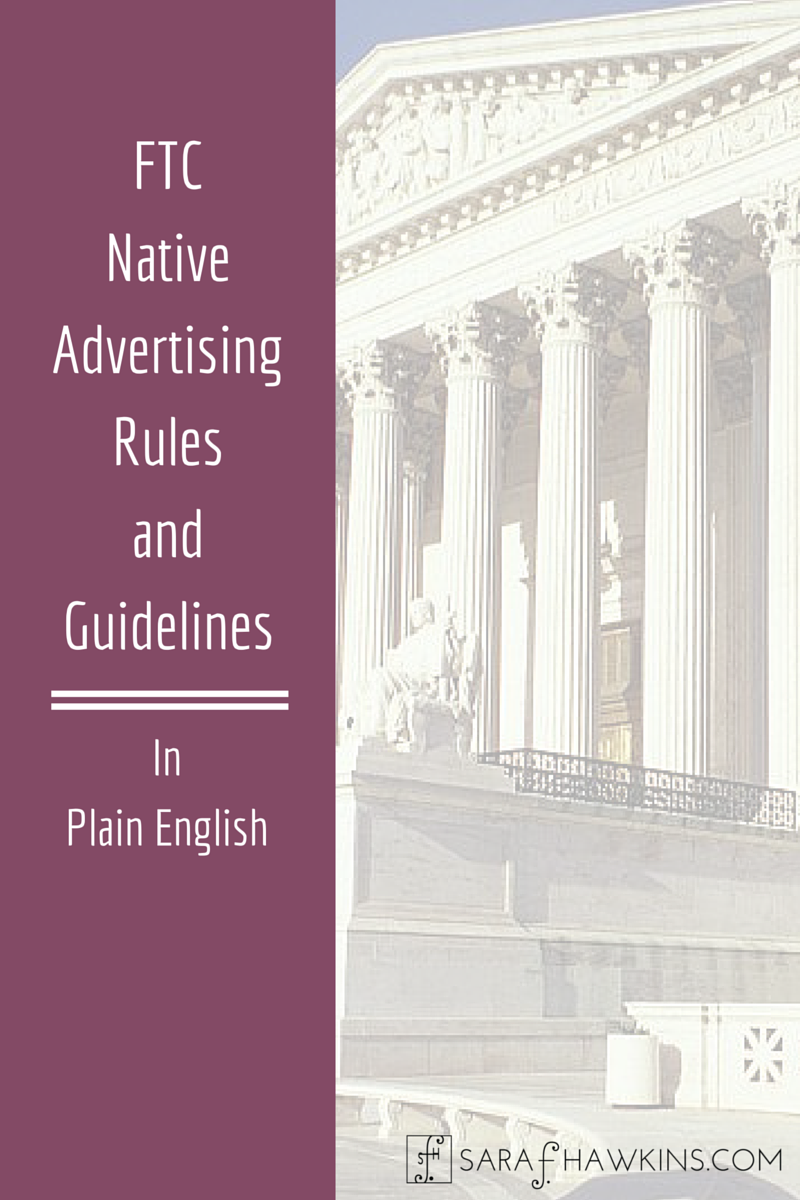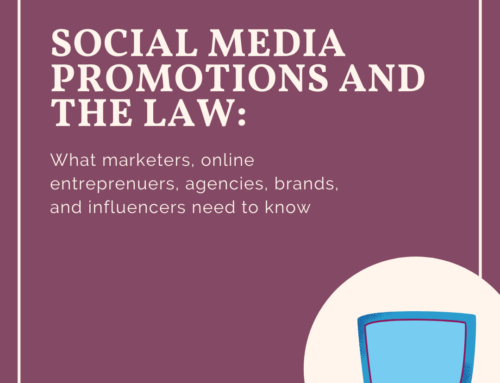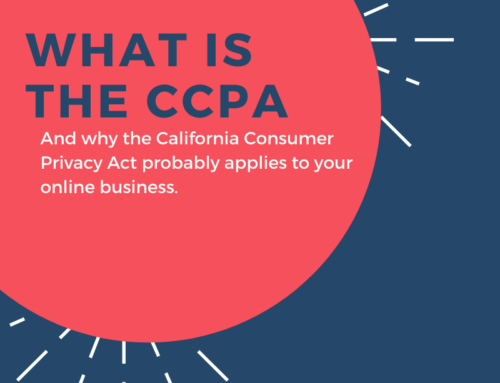Native advertising rules were released by the Federal Trade Commission as many businesses started to wind down in preparation for the Christmas holiday. Without fanfare, the FTC issued its newest enforcement policy. Clearly aimed at native advertising, the Enforcement Policy Statement on Deceptively Formatted Advertisement, and the associated business guide, were issued on December 22, 2015 and provide explicit detail on the rules for native advertising. While this Enforcement Policy Statement doesn’t provide new law or, theoretically, change how this type of advertising is evaluated from a legal and regulatory opinion, it will change, from a practical implementation standpoint, how brands, agencies, and digital publishers execute this type of advertisement.
What is ‘Native Advertising’
The FTC defines “native advertising,” as content that bears a similarity to the news, feature articles, product reviews, entertainment, and other material that surrounds it online. Think of native advertising as what used to be called “advertorial” in traditional print publications. While it’s being differentiated from sponsored content, native advertising is a type of sponsored content that attempts to look like just another article from the publication. But it’s not limited to articles. Native ad can, for example, be video or audio content, buttons, logos, and much more. It’s straight-up advertising cloaked by the surrounding content so you don’t immediately get that “you’re trying to sell me something” feeling.
Are these new laws?
The rules themselves aren’t new. The FTC is charged with consumer protection, which means that it ensures that truth-in-advertising standards are enforced and that deceptive or unfair trade practices are stopped. The long-established FTC Act is the basis for this new policy statement. Because digital marketing and advertising have evolved in the 100 years since the Act was created, the Commission has taken a look at how digital marketing is impacting consumers and decided that since the industry wasn’t policing itself and establishing “best practices” in compliance with the laws that it will do it for them. With a focus on preventing consumer deception, the Commission has taken the current laws and given them a 21st-century application.
Are these laws or just rules?
This is one of those questions that’s easy, but not always easily understood. The FTC does not make laws, it makes rules. The rules have the backing of existing laws so if you violate the rules there are specific laws and associated civil (and in some cases criminal) penalties that can be handed out. The laws are in the nearly 100-year old FTC Act and the host of other laws passed by Congress such as Fair Credit Reporting Act of 1970, Telemarketing and Consumer Fraud and Abuse Prevention Act of 1994, the Children’s Online Privacy and Protection Act of 1998, the Do-Not-Call registry Act of 2003, and the Dot Com Disclosures of 2013. The FTC makes rules, not laws. But these are very powerful rules. So while the FTC is very specific not to call these laws, but instead refer to them as ‘policy statement’ or ‘business guidelines’, understand that at both the federal and state level, administrative enforcement action is backed by law and can be escalated to the Department of Justice or, on the state level, your state Attorney General for further enforcement.
When do these rules become effective?
These rules became effective upon publication. Unless otherwise posted, new FTC rules and guidelines become immediately effective when they are made public.
Why is the FTC doing this now?
After years of rolling out new rules and guidelines for various types of digital advertising, marketing, and consumer promotions, the FTC decided now was the time to specifically address what has become known as native advertising. It’s difficult to know what set this in motion, but likely it was related to a multitude of consumer complaints. As native advertising came in to being, and has taken on multiple forms in the digital marketplace, regulators must evaluate these new types of consumer promotions with a focus on protecting the consumer but also balance that with an opportunity for the industry to adopt standardized best practices without intervention. When that doesn’t happen, the government, in this case the FTC, steps in to establish what those best practices must be to ensure compliance with the laws as well as prevent misleading or deceiving consumers.
Are there penalties for non-compliance?
As with all FTC enforcement, there is a broad range of available penalties that can be levied. From a simple cease-and-desist letter to multi-million dollar fines, and even criminal penalties, the FTC has the latitude to determine what it believes is the best means of enforcement. While the agency has, historically, gone the route of using cease-and-desist letters in the early period of enforcement, the actual penalty is situation specific and will involved the consideration of a host of factors. Keep in mind, though, that when contacted by an FTC regulator, you business will likely need to hire legal counsel and that alone can be very costly even if the end result is a cease-and-desist letter. Furthermore, while investigations may be confidential and non-public, final enforcement may be subject to public disclosure.
Is the FTC picking on digital advertisers?
While it may seem that way, for nearly 100 years, the FTC has been responsible for ensuring truth-in-advertising laws were equally applied to any and all types of consumer promotion. While that may have been, at one time, limited to periodicals, as new forms of consumer promotion and advertising have been developed and used, the FTC has had to adapt new rules. When telemarketing came into being, old rules of how to designate it was an advertisement has to be developed.
It took time to understand how best to do that without overly burdening marketing while at the same time ensuring consumers got the information they needed. As email marketing became the new darling, it was a combination of rulemaking as well as legal action from Congress that came together. Now, we’re seeing a similar path with regard to this new form of advertising. Native advertising is an extension of other types of traditional types of promotion, with a digital twist. Digital marketers may not have understood that the rules for traditional advertising were applicable, so the FTC had to take action to craft rules specifically for digital marketers and advertisers.
Who responsible for compliance?
The FTC has made it clear that this Enforcement Policy Statement on Deceptively Formatted Advertisements applies to more than just advertisers. “Everyone who participates directly or indirectly in creating or presenting native ads should make sure that ads don’t mislead consumers about their commercial nature.” (Source) There is no “safe harbor” provision for publishers. While other types of disclosure rules are specifically focused on the advertiser, digital advertising disclosures are, more and more, looking to the entire funnel.
What about bloggers?
Most bloggers do not engage in native advertising. Bloggers tend to use ad networks, sponsored posts, and other types of paid content. That content may still require disclosure, but not under these rules. Rules for disclosing paid or sponsored content, while similar, are not addressed by these new rules.
What exact language do I have to use for disclosure?
While the FTC has words and phrases that it suggests as likely to be understood by consumers as designating an advertisement or paid content that appears as indistinguishable from other type of editorial, review, graphic, or other type of content, the list is not exhaustive. So while something like “Ad”,”Paid Advertisement”, and “Sponsored Advertisement” are likely to be clearly understood by consumers as designating some type of advertising, the FTC understands that there may also be other language, combined with the context, may also be sufficient in informing consumers. That being said, the FTC is quite clear that “…terms such as “Promoted” or “Promoted Stories,” which in this context are at best ambiguous and potentially could mislead consumers that advertising content is endorsed by a publisher site.”
Consumers need to understand that these native ads are commercial advertising and not unbiased or independent content. Consistency in the form and format of the disclosure is key with this type of advertising. While you may want to be creative so it doesn’t seem so “in-your-face” the whole point of this new policy is so you make it clear to the average consumer that what they are about to read, see, click, touch, or otherwise engage with is an ad. Plain and simple. Native advertising is an ad in editorial clothing and the FTC has said enough with thinking you can fool people into engaging with your ad.
Is the FTC going to come after me?
Truth is, probably not. Then again, if what you’re doing is egregious, causing consumer complaints, patently deceptive, or purposefully designed to confuse the consumer it’s possible you’ll be hearing from the FTC soon. The FTC is not here to troll you. With billions of native ad-type content appearing on sites, the FTC does not have the bandwidth to review every instance where disclosure would be needed. However, no one really knows how regulators choose the cases to investigate. Like other agencies, sometimes it’s just the luck of the draw. Remember, these are real people and they surf the internet like you and they’re not only doing their job but also seeing this stuff “in the wild”. If your native advertising content catches the eye of a regulator you could be on the radar of the FTC.
Are there examples so I can develop my own policy of when to provide disclosure?
Glad you asked! Yes, the FTC’s Native Advertising: A Guide for Businesses provides 17 examples of when disclosure would and would not likely be necessary. Though not comprehensive, these examples cover a number of different forms native advertising has taken over the recent past.
Does this apply to mobile apps?
Simply, yes. Digital content, whether viewed on a computer or mobile device must contain the same disclosures. For mobile devices, sometimes content is viewed through a browser and other times through an application. Regardless how you provide the native advertisement the disclosure must be seen (or heard) in a meaningful way. If there are limitations because of the platform, i.e., desktop browser, mobile browser, or mobile application, you are responsible for configuring the disclosure so it works regardless of where the ad appears.
What are some key do’s and don’ts?
- Transparency – the goal of these rules is to ensure consumers know what is and is not an ad.
- Clear & Prominent – as with all disclosures, they must be clear to the consumer and prominently displayed so they can be seen or heard. Don’t use jargon or industry-specific language consumers may not understand. Clarity and prominence come in both language and location, as well as in the color, shading, and visual presentation.
- Consistency – create a standard disclosure policy and stick to it. The more times the consumer sees the disclosure in the exact same format the easier it is, over time, to understand that the content is an advertisement.
- Placement – as with all required disclosures, placement is important. The FTC has suggested placing the needed disclosure in front of or above a headline. There are other suggested locations, though not comprehensive, depending on the type of native advertisement. The key is to place the disclosure where the consumer will see it before they’ve invested time in reading, watching, clicking, or tapping.
- Portable – your disclosures must be portable. If your native ad content will be republished in your email newsletter, the disclosures must go along with it. If your native ad is syndicated, ensure that all third-party content providers can easily access your disclosures. For changes in platform, the disclosures must remain.
- Multimedia – as video and audio content delivery gains in use, disclosures must be present in the same format. However, with content that’s presented in multiple forms, the disclosure may need to be provided in more than one format. For example, a video is often delivered in both visual and audio forms and disclosure would be required in both forms.
Conclusion
In general, the rules for native advertising are in parallel with all other FTC rules and guidelines dedicated to digital and online disclosure. With consumer protection at its core, the Enforcement Policy Statement on Deceptively Formatted Advertisements specifically addresses this new form of advertising and seeks to prevent deceptive and misleading advertising and promote truth and transparency by brands, agencies, publishers, and anyone using this type of marketing tool.
While not perfect, these rules are an attempt to provide some level of consistency for consumers. And while marketers and advertisers may feel the new rules are restrictive or put a damper on creativity and innovation, the fact remains that self-governance has not worked. Until there is further clarification, you may want to seek legal counsel regarding your existing policies or create policies consistent with these new rules and guidelines.






